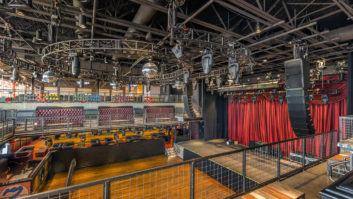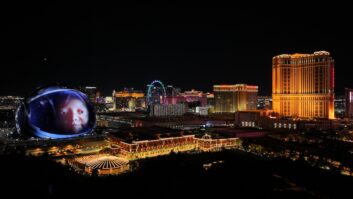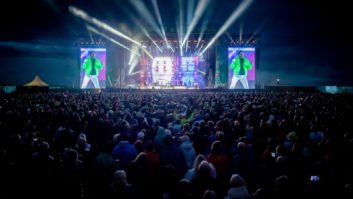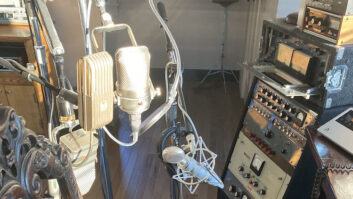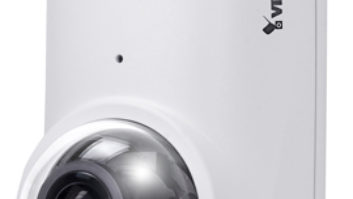Australian worship band Hillsong United recently played to 15,000 fans at the Hollywood Bowl through the venue’s new L-Acoustics K1 line array house system. HOLLYWOOD, CA—The Hollywood Bowl may have won Pollstar’s Best Major Outdoor Concert Venue award for the ninth consecutive year in February 2013, but the team behind its audio technology has no desire to rest on its laurels. At the start of this year’s summer season, the venue installed new L-Acoustics arrays, replacing an older V-Dosc setup with the world’s first all-white K1 system, quite likely the first semi-installed K1 rig anywhere in the world.

Winning those awards over the years has been no mean feat, however. The venue presents one of the most diverse music programs anywhere to an audience of nearly 18,000 seated in an amphitheater that extends 450 feet from the stage and rises 100 feet above it.
“It’s a unique venue—one of the top venues for acoustic orchestral music as well as genres from rock to world music and jazz,” says Fred Vogler, principal sound designer and mixer for the Los Angeles Philharmonic, which, along with the Hollywood Bowl Orchestra, calls the venue its summer home. “We have high-level acts with a sophisticated audience, and we have a good set of people putting these productions together, so it’s great to have an opportunity to upgrade our sound system with the tools that are needed to perform at that level.”
The two main left and right hangs each include 16 K1 arrays together with four K1-SB subs, with four under-hung Karas for down fill. The flown subs are supplemented by six SB28s, topped with four Arcs IIs providing wide coverage to the ramp box seats, on the deck, per side. A center hang of eight Kara cabinets covers the garden boxes and the back row of the pool boxes.
“When you’re down in those boxes, you feel a little more presence off the vocals when you can bring it to the center,” Vogler explains. “The integrity and the style of speaker seamlessly mesh together, so you don’t feel like you’re walking in and out of a coverage pattern.”
The new rig includes fewer boxes than the previous system, yet offers a significant improvement in performance, according to Vogler. “The enclosures are closer together. The integrity of the look is better, and the proximity of the drivers and the way the boxes interface is so much tighter and better, that the wavefront coming off that array is really high-level. When you walk the venue, there’s no weird transition point; it just feels even throughout the venue.”
The main arrays are also set a little higher than the previous rig. “We were initially lower with the K1s to try to keep the location of the sound source at the stage. We wanted a little more air, so we raised it about a meter and a half. What we found was that the K1 still kept the localization to the stage,” Vogler reports.
The main system is powered by 31 LA8 amplifiers, which also provide processing such as gain, delay and EQ, controlled via L-Acoustics’ Network Manager software. The software offers a different approach to the Bowl’s previous DSP: “You do lifts and boosts in a different way; it’s not a parametric, but I also have parametric control. And they have array morphing, which is kind of a combination of equalization.”
Eight KARAs are deployed along the stage lip to provide additional front fill on louder non-orchestral shows. Previously installed 115XT HiQ boxes provide coverage in the seating areas that are acoustically shadowed by the venue’s lighting towers.
Vogler also reports that the venue has been applying acoustic treatment. “On surfaces that are closest to the PA, we’ve put acoustic treatment. We’ve been doing Pyrok on all of our towers—it’s really nice.”
It was not a foregone conclusion that the venue would upgrade its LAcoustics system, despite a long relationship with the manufacturer. “We did a very diligent audition process in the fall,” says Vogler. “We wanted it to perform well with the pop and jazz and world music shows, but it also had to cater to the acoustic orchestral sound and be something very natural sounding, very open.”
Vogler has had no reason to complain: “There’s integrity to the signal that we haven’t experienced before. And the resolution is such that it’s very natural. It doesn’t feel like you’re applying some kind of coloration due to amplification. We wanted to give people a big step forward in sound, and I think we’ve done it.”
He concludes, “I always wanted to have the biggest, baddest system, and boy, we’re knocking at it. I don’t know if we can get much better.”
L-Acoustics
l-acoustics.com

